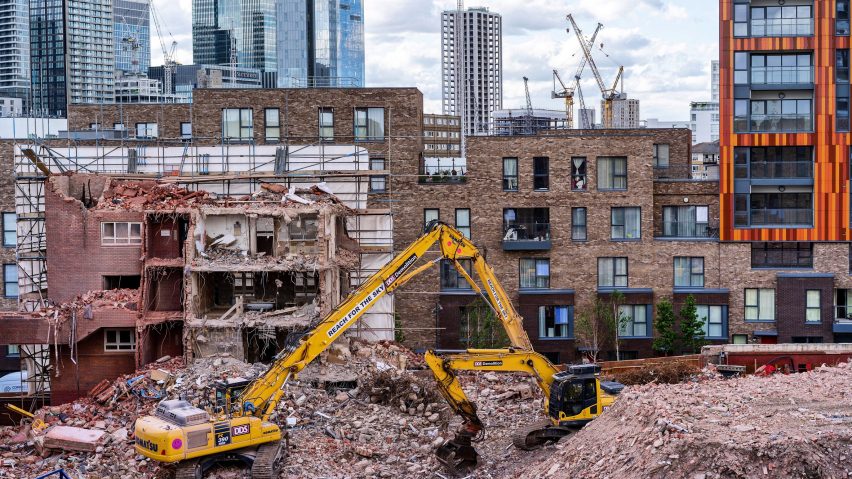
Retention of existing buildings must be "the starting point" for major London developments
Large projects in London will have to meet embodied carbon benchmarks and prioritise retaining existing buildings over demolition under updated planning guidance published by mayor Sadiq Khan.
Released last month, the two-part London Plan Guidance package sets out how significant developments will need to report and cut down on waste and whole-life carbon to further the city's goal of reaching net-zero emissions by 2030.
Refurbishing existing buildings is highlighted as the most efficient strategy to achieve both of these objectives and the one to be considered before all others.
Retrofitting is the "lowest-carbon option"
"Retention should be seen as the starting point," the guidelines read. "Retaining existing built structures for reuse and retrofit, in part or as a whole, should be prioritised before considering substantial demolition, as this is typically the lowest-carbon option."
"If substantial demolition is proposed, applicants will need to demonstrate that the benefits of demolition would clearly outweigh the benefits of retaining the existing building or parts of the structure."
One such argument is currently being fought over Marks & Spencer's flagship store on Oxford Street, which is set to be torn down and replaced with a new build designed by London firm Pilbrow & Partners.

After critics argued that the project would waste the embodied carbon of the existing building and generate an additional 39,500 tonnes of emissions, Khan decided to review the controversial demolition in light of his new planning guidance.
The mayor eventually said he would not stop the building from being knocked down, as a preliminary carbon report undertaken by engineering firm Arup found that over its whole lifecycle, the new build would actually have a lower carbon footprint than a refurbishment due to its superior operational performance.
However, housing secretary Michael Gove has since decided to halt the demolition until the scheme can be reviewed by government.
Whole-life carbon benchmarks for major developments
The new guidelines follow in the footsteps of Khan's 2021 London Plan, which sets out his wider planning strategy for the capital.
This mandates that all buildings and infrastructure projects over a certain size or of particular "strategic importance" to London will need to complete a whole-lifecycle carbon assessment and circular economy statement before they can receive planning approval.
While national building regulations and net-zero carbon targets have so far focused on operational emissions from heating and powering buildings, these new policies are a first step towards regulating embodied emissions from materials, construction and demolition.
"The Mayor's London Plan introduced two ground-breaking policies that require the largest developments in London to tackle the waste and embodied carbon that results from construction," said a spokesperson for the mayor.
"These were the very first policies to be adopted of this type in any UK city and were a bold move to help reduce the impact of development in London."
The London Plan Guidance that was released to support these policies comes in two interrelated parts.
The guidance on whole-life carbon assessments sets out emissions benchmarks for every stage of a building's lifecycle alongside strategies for how these can be met, while the circular economy statement guidance is focused on helping architects achieve "net-zero waste".
The top photo is by Rumman Amin.